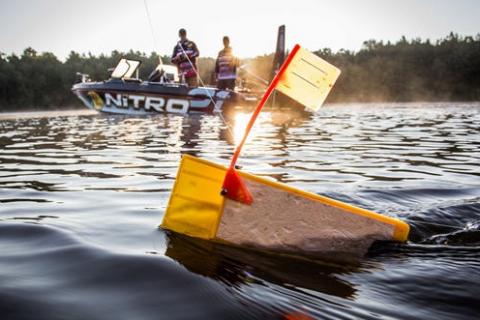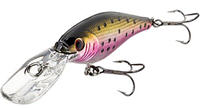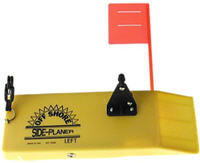
Step 1: Choosing the Right Bait
 |
| Berkley Flicker Shad Crankbaits |
As with any technique, there is a process, choosing the fishing bait is the first step. You need to ask yourself: What is the main forage in the lake you’re fishing? Knowing this will help you determine the lure style you should start with. Typically we suggest you break this down to one of two shapes; shad-style and minnow-style.
Shad-style baits, like the Berkley Flicker Shad, are great when the fish are feeding on shad, perch, crappie and similar forage. On lakes where the walleyes are feeding on smelt, cisco and alewives, we opt for longer baits like Berkley Flicker Minnows.
When fishing earlier in the year, the forage size tends to run smaller than later in the season, so start off with Flicker Shads in sizes 4 and 5, or Flicker Minnows in sizes 5 or 7. By no means does this mean you couldn’t catch walleyes on a “shad lake” using a size 9 Flicker Minnow, but it’s probably not the first lure you should tie on to start the day.
Step 2: Putting Those Baits in the Feeding Zone
Running the right lures is just one part of the puzzle. You also have to put those baits at the right depth for them to get bit. This is called “the feeding zone”. As you move around graphing for fish to set up on, you may mark some fish suspended 25 feet down over 35 feet of water. Your first instinct might be to run your lures at 25 feet, but there’s a good chance you won’t get bites doing that. Walleyes normally feed “up”, meaning their feeding zone is above where they are positioned. Running your lures at 20 feet, just above the fish, will typically be a better plan of attack. Fish that are relating to structure and hanging tighter to the bottom are another story. While running lures just above these fish can trigger a few to bite, many times these fish are better triggered by running lures right in front of their faces.
Step 3: The Key to Successful Trolling
Knowing exactly how deep your lures run is one of the most important keys to being successful at trolling for any fish species, especially walleyes. For years I have relied on the data provided by the gang at Precision Trolling to know how much line to let out to get certain baits to specific depths. It is simply a matter of referring to the depth chart for the particular lure I was fishing, first in their books (which are no longer in print), and then on stickers that can easily be attached to the lid of your crankbait box for easy reference. Now, with the convenient Precision Trolling Data App, available for both Android and iPhone formats, this information is right at your fingertips.
![]() Precision Trolling Data - Android
Precision Trolling Data - Android
![]() Precison Trolling Data - iPhone
Precison Trolling Data - iPhone
 |
| Off Shore Tackle Side-Planer |
Of course when we hear the term “covering water” everyone thinks about getting those baits out from the boat and covering a wider swath of water. In open water, that means utilizing planer boards. The best boards out there are the Off Shore Tackle OR12 Side Planers. These boards are ballasted so they run true in the roughest conditions, and even sit upright when still in the water. These boards are rugged too, built to last you for many seasons of fishing.
Editor’s Note: If you have questions or comments on this or other articles of mine you may have read, contact me through the website The NextBite.
- 4274 views

